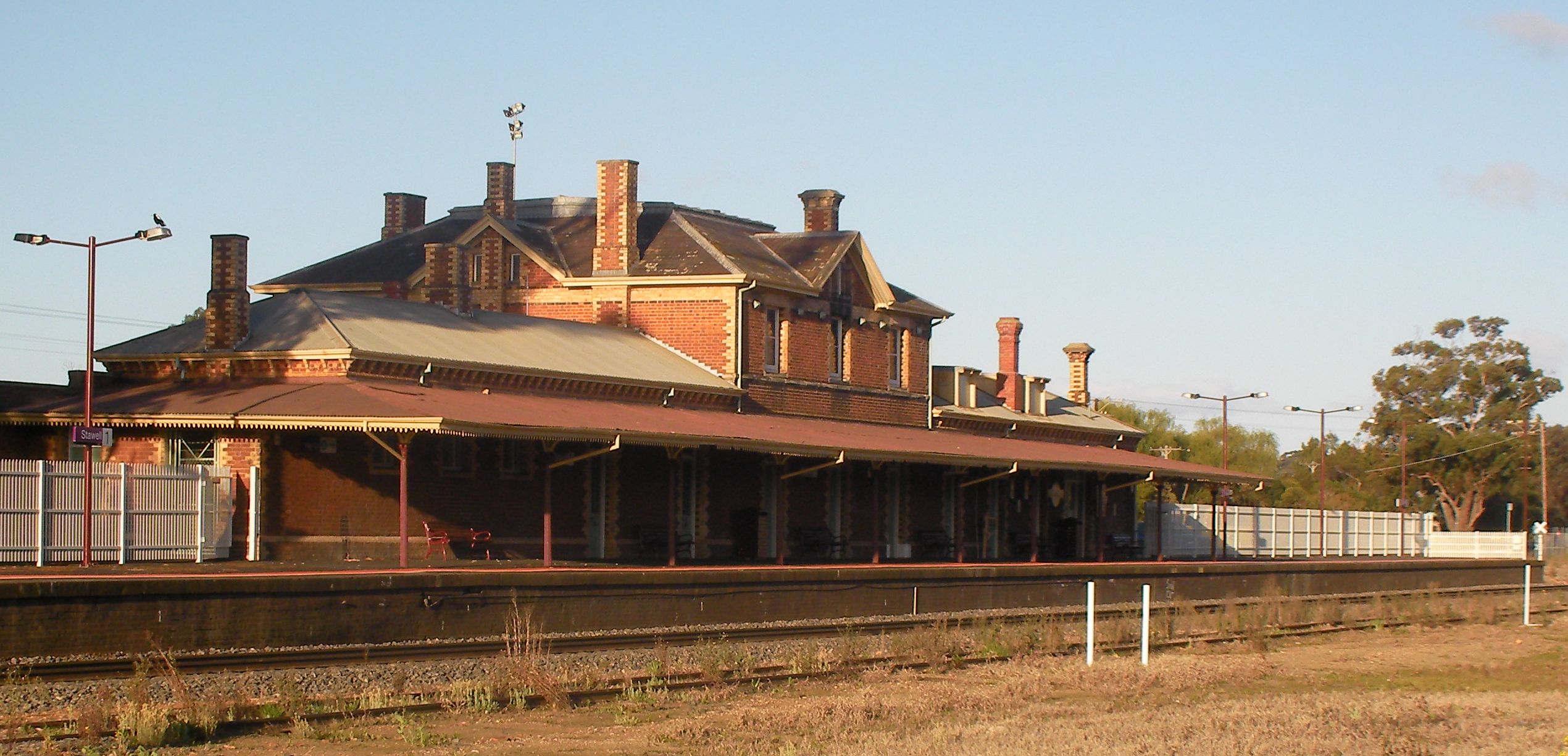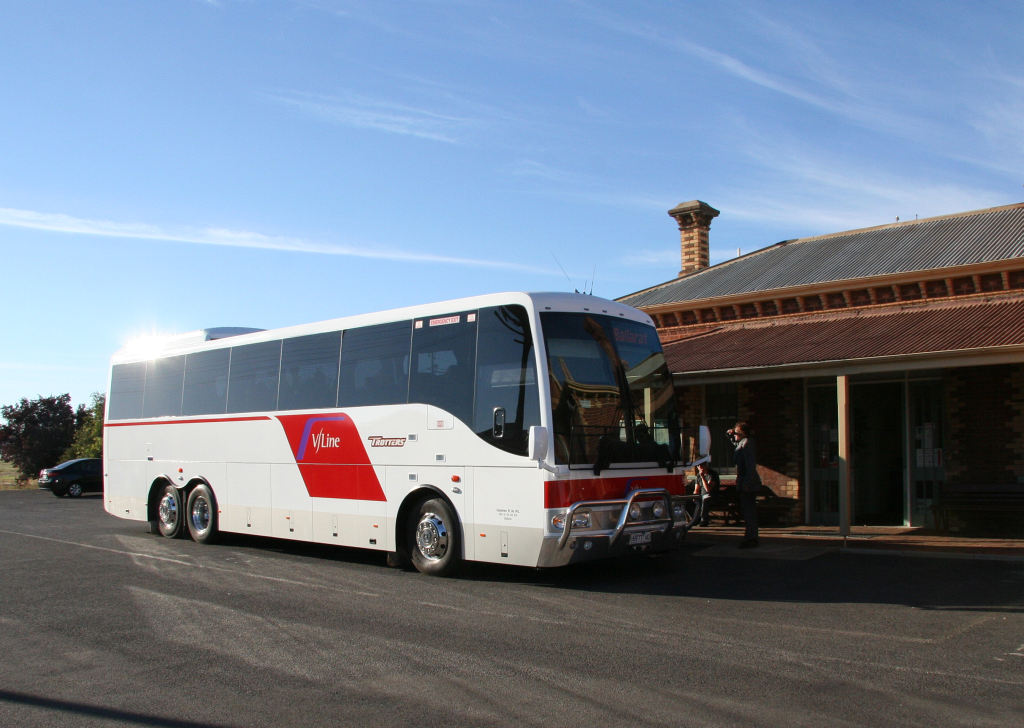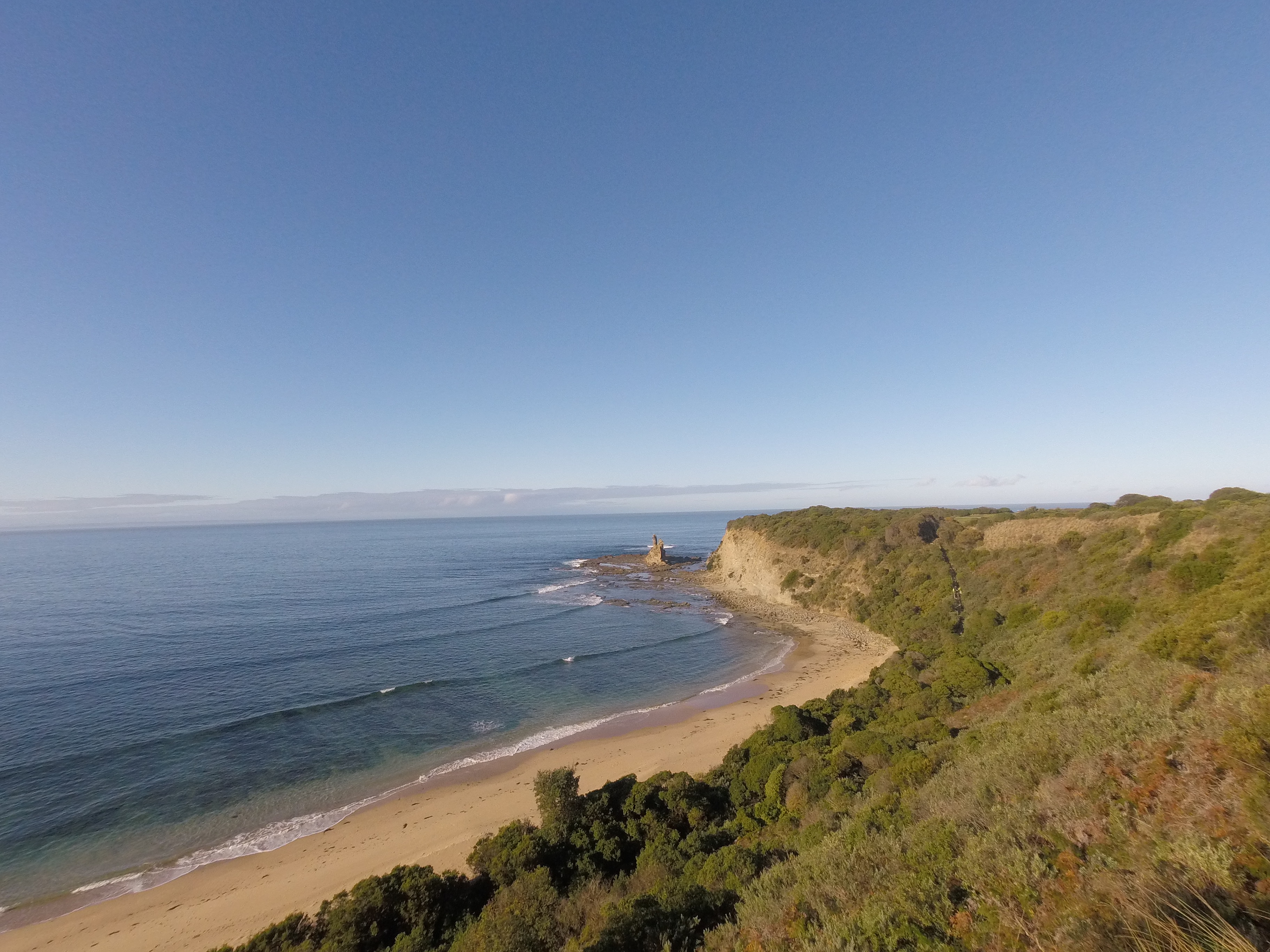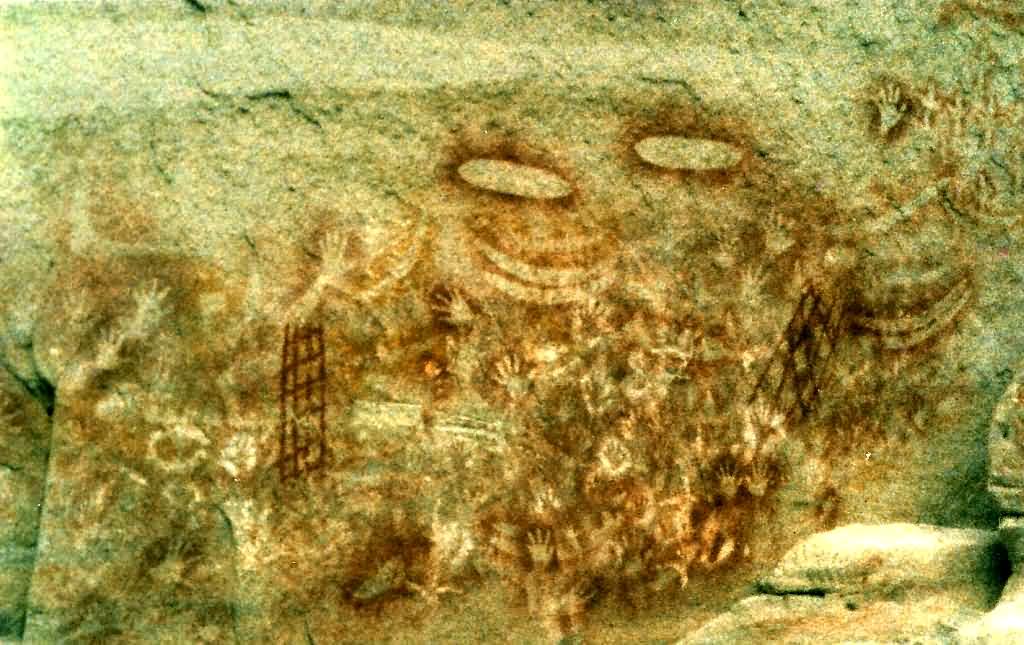|
Bunjil
Bunjil, also spelt Bundjil, is a creator deity, culture hero and ancestral being, often depicted as a wedge-tailed eagle in Australian Aboriginal mythology of some of the Aboriginal peoples of Victoria. Creation stories In the Kulin nation in central Victoria he was regarded as one of two moiety ancestors, the other being Waang the crow. Bunjil (or Bundjil) has two wives and a son, Binbeal the rainbow. His brother is Palian the bat. He is assisted by six ''wirmums'' or shamans who represent the clans of the Eaglehawk moiety: Djart-djart the nankeen kestrel, Thara the quail hawk, Yukope the parakeet, Lar-guk the parrot, Walert the brushtail possum and Yurran the gliding possum. A Boonwurrung story tells of a time of conflict among the Kulin nations, when people argued and fought with one another, neglecting their families and the land. The mounting chaos and disunity angered the sea, which began to rise until it had covered the plains and threatened to flood the enti ... [...More Info...] [...Related Items...] OR: [Wikipedia] [Google] [Baidu] |
Woiwurrung Language
The Woiwurrung, also spelt Woi-wurrung, Woi Wurrung, Woiwurrong, Woiworung, and Wuywurung, are an Aboriginal Australian people of the Woiwurrung language group, in the Kulin people, Kulin alliance. The Woiwurrung people's territory in Central Victoria (Australia), Victoria extended from north of the Great Dividing Range, east to Mount Baw Baw, south to Mordialloc Creek and to Mount Macedon, Sunbury, Victoria, Sunbury and Gisborne, Victoria, Gisborne in the west. Their lands bordered the Gunai people, Gunai/Kurnai people to the east in Gippsland, the Boon wurrung people to the south on the Mornington Peninsula, and the Dja Dja Wurrung and Taungurung to the north. Before Colonisation of Australia, colonisation, they lived predominantly as aquaculturists, swidden agriculturists (growing grasslands by fire-stick farming to create fenceless herbivore grazing, garden-farming murnong yam roots and various tuber lilies as major forms of starch and carbohydrates), and hunters and gathe ... [...More Info...] [...Related Items...] OR: [Wikipedia] [Google] [Baidu] |
Stawell, Victoria
Stawell ( "stall"), is an Australian town in the Wimmera region of Victoria (Australia), Victoria west-north-west of the state capital, Melbourne. Located within the Shire of Northern Grampians Local government in Australia, local government area, it is a seat of local government for the shire and its main administrative centre. At the , Stawell had a population of . It was founded in 1853 as Pleasant Creek during the Victorian gold rush. It is one of few towns in Victoria retaining an active gold mining industry. Stawell is famed for the Stawell Gift, a professional foot race that began in 1878. It is also known as the gateway to the Grampians National Park. One of the most significant Aboriginal sacred site, Aboriginal cultural sites in south-eastern Australia is Bunjil's Shelter, within the Black Range Scenic Reserve, south of Stawell. It is named after William Stawell, Sir William Foster Stawell (1815–89), the Chief Justice of Victoria. Indigenous people Aboriginal Vi ... [...More Info...] [...Related Items...] OR: [Wikipedia] [Google] [Baidu] |
Black Range Scenic Reserve
Stawell ( "stall"), is an Australian town in the Wimmera region of Victoria west-north-west of the state capital, Melbourne. Located within the Shire of Northern Grampians local government area, it is a seat of local government for the shire and its main administrative centre. At the , Stawell had a population of . It was founded in 1853 as Pleasant Creek during the Victorian gold rush. It is one of few towns in Victoria retaining an active gold mining industry. Stawell is famed for the Stawell Gift, a professional foot race that began in 1878. It is also known as the gateway to the Grampians National Park. One of the most significant Aboriginal cultural sites in south-eastern Australia is Bunjil's Shelter, within the Black Range Scenic Reserve, south of Stawell. It is named after Sir William Foster Stawell (1815–89), the Chief Justice of Victoria. Indigenous people Aboriginal peoples of Victoria lived in the Stawell area for many thousands of years before the coloni ... [...More Info...] [...Related Items...] OR: [Wikipedia] [Google] [Baidu] |
Balayang
In the mythology of the Aboriginal people of south-eastern Australia (specifically, the Kulin nation), Balayang or Pallian the bat was a brother of Bunjil the eaglehawk, but lived apart from him. Once, Bunjil asked him to come and live with him, but Balayang replied that Bunjil's country was too dry and that Bunjil ought to come and live with him instead. This upset Bunjil, who sent his two helpers, Djurt-djurt the nankeen kestrel and Thara the quail hawk, after Balayang. They set fire to the bat's country and Balayang and his family were scorched and turned permanently black. Another story says that Balayang formed the oceans, rivers, and creeks. Because of his black colouring, Balayang was associated with Crow, and thus belonged to the moiety in opposition to Eaglehawk. Another story credits him with creating or finding Crow women (and thus marriage partners for the Eaglehawk moiety). One day, Balayang was amusing himself by thumping the surface of the water, causing it to thicken ... [...More Info...] [...Related Items...] OR: [Wikipedia] [Google] [Baidu] |
Gariwerd
The Grampians National Park, commonly known as the Grampians, is a national park located in the Grampians region of Victoria, Australia. The Jardwadjali name for the mountain range itself is Gariwerd. The national park is situated between and on the Western Highway and on the Glenelg Highway, west of Melbourne and east of Adelaide. Proclaimed as a national park on 1 July 1984, the park was listed on the National Heritage List on 15 December 2006 for its outstanding natural beauty and being one of the richest Aboriginal rock art sites in south-eastern Australia. The Grampians feature a striking series of mountain ranges of sandstone. The Gariwerd area features about 90% of the rock art in the state. Etymology At the time of European colonisation, the Grampians had a number of indigenous names, one of which was ''Gariwerd'' in the western Kulin language of the Mukjarawaint, Jardwadjali, and Djab Wurrung people, who lived in the area and who shared 90 per cent of the ... [...More Info...] [...Related Items...] OR: [Wikipedia] [Google] [Baidu] |
Boonwurrung
The Boonwurrung, also spelt Bunurong or Bun wurrung, are an Aboriginal people of the Kulin nation, who are the traditional owners of the land from the Werribee River to Wilsons Promontory in the Australian state of Victoria. Their territory includes part of what is now the city and suburbs of Melbourne. They were called the Western Port or Port Philip tribe by the early settlers, and were in alliance with other tribes in the Kulin nation, having particularly strong ties to the Wurundjeri people. The Registered Aboriginal Party representing the Boonwurrung people is the Bunurong Land Council Aboriginal Corporation. Language Boonwurrung is one of the Kulin languages, and belongs to the Pama-Nyungan language family. The ethnonym occasionally used in early writings to refer to the Bunwurrung, namely ''Bunwurru'', is derived from the word ''bu:n'', meaning "no" and ''wur:u'', signifying either "lip" or "speech". This indicates that the Boonwurrung language may not be spoken ... [...More Info...] [...Related Items...] OR: [Wikipedia] [Google] [Baidu] |
Aboriginal Victorians
Aboriginal Victorians, the Aboriginal Australians of Victoria, Australia, occupied the land for tens of thousands of years prior to European settlement. Aboriginal people have lived a semi-nomadic existence of fishing, hunting and gathering and associated activities for at least 40,000 years. The Aboriginal people of Victoria had developed a varied and complex set of languages, tribal alliances, beliefs and social customs that involved totemism, superstition, initiation and burial rites, and tribal moieties. History Prehistory There is some evidence to show that people were living in the Maribyrnong River valley, near present-day Keilor, about 40,000 years ago, according to Gary Presland. At the Keilor archaeological site a human hearth excavated in 1971 was radiocarbon-dated to about 31,000 years BP, making Keilor one of the earliest sites of human habitation in Australia.Gary Presland, Keilor Archaeological Site', eMelbourne website. Accessed 3 November 2008 A cranium ... [...More Info...] [...Related Items...] OR: [Wikipedia] [Google] [Baidu] |
Victoria (Australia)
Victoria, commonly abbreviated as Vic, is a States and territories of Australia, state in southeastern Australia. It is the second-smallest state (after Tasmania), with a land area of ; the second-most-populated state (after New South Wales), with a population of over 7 million; and the most densely populated state in Australia (30.6 per km2). Victoria's economy is the List of Australian states and territories by gross state product, second-largest among Australian states and is highly diversified, with service sectors predominating. Victoria is bordered by New South Wales to the north and South Australia to the west and is bounded by the Bass Strait to the south (with the exception of a small land border with Tasmania located along Boundary Islet), the Southern Ocean to the southwest, and the Tasman Sea (a marginal sea of the South Pacific Ocean) to the southeast. The state encompasses a range of climates and geographical features from its temperate climate, temperate coa ... [...More Info...] [...Related Items...] OR: [Wikipedia] [Google] [Baidu] |
Deen Maar
Lady Julia Percy Island, known as ''Deen Maar'' or ''Dhinmar'' in the Gunditjmara language, lies off the coast, in the Barwon South West region of Victoria, Australia in Bass Strait. The island is an unincorporated area under the direct administration of the Government of Victoria. Description Lady Julia Percy Island is south-south-west of Yambuk, and south-west of Port Fairy. The island is about in length by in width, with an area of , comprising a plateau, varying in height from asl, surrounded by cliffs, rock platforms and reefs. It contains an important seal breeding colony. It has a long history of human exploitation, which has drastically affected its vegetation communities, though it is now protected as a State Faunal Reserve. It is listed on Australia's Register of the National Estate. It is best viewed from The Crags or Yambuk Lake, both of which are in the Yambuk area. History Gunditjmara significance ''Deen Maar'' was well known to the Gunditjmara people; t ... [...More Info...] [...Related Items...] OR: [Wikipedia] [Google] [Baidu] |
Binbeal
In Australian Aboriginal religion and mythology, Binbeal is a spirit associated with rainbows. He is a son of Bunjil. References Australian Aboriginal gods Sky and weather gods {{deity-stub ... [...More Info...] [...Related Items...] OR: [Wikipedia] [Google] [Baidu] |
Altair
Altair is the brightest star in the constellation of Aquila (constellation), Aquila and the list of brightest stars, twelfth-brightest star in the night sky. It has the Bayer designation Alpha Aquilae, which is Latinisation of names, Latinised from α Aquilae and abbreviated Alpha Aql or α Aql. Altair is an A-type main-sequence star, A-type main-sequence star with an apparent visual magnitude of 0.77 and is one of the vertices of the Summer Triangle Asterism (astronomy), asterism; the other two vertices are marked by Deneb and Vega. It is located at a distance of from the Sun. Altair is currently in the G-cloud—a nearby interstellar cloud formed from an accumulation of gas and dust. Altair rotates rapidly, with a velocity at the equator of approximately 286 km/s.From values of ''v'' sin ''i'' and ''i'' in the second column of Table 1, Monnier et al. 2007. This is a significant fraction of the star's estimated breakup speed of 400 km/s. ... [...More Info...] [...Related Items...] OR: [Wikipedia] [Google] [Baidu] |
Dreamtime
The Dreaming, also referred to as Dreamtime, is a term devised by early anthropologists to refer to a religio-cultural worldview attributed to Australian Aboriginal religion and mythology, Australian Aboriginal mythology. It was originally used by Francis James Gillen, Francis Gillen, quickly adopted by his colleague Walter Baldwin Spencer, and thereafter popularised by A. P. Elkin, who later revised his views. The Dreaming is used to represent Aboriginal concepts of "Everywhen", during which the land was inhabited by ancestral figures, often of heroic proportions or with supernatural abilities. The term is based on a rendition of the Arandic languages, Arandic word , used by the Aranda people, Aranda (Arunta, Arrernte) people of Central Australia, although it has been argued that it is based on a misunderstanding or mistranslation. Some scholars suggest that the word's meaning is closer to "Eternity, eternal, uncreated". Anthropologist William Edward Hanley Stanner, William ... [...More Info...] [...Related Items...] OR: [Wikipedia] [Google] [Baidu] |






